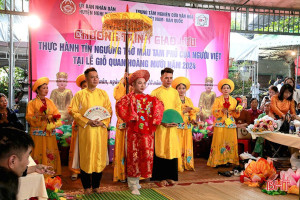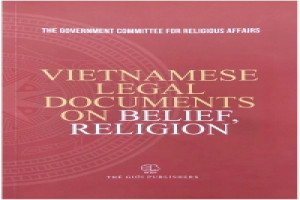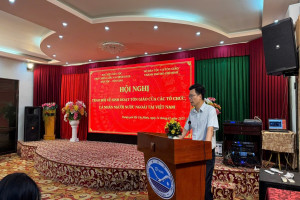
The Vuon Chuoi archaeological site, though the most important and largest relic complex of the pre-Dong Son and Dong Son Cultures (700 BC - AD 100) in Vietnamese history, has long been on the brink of being wiped out.
The need to preserve the archaeological site, believed to be Hanoi’s first human settlement, has become more urgent as a construction project is set to be built in Kim Chung Commune, Hoai Duc District, where the relic is located.
Vietnamese scientists have often fought for the preservation of the city’s invaluable archaeological treasure, and they recently gathered at a seminar held by Hanoi’s Department of Culture and Sports to discuss the the site.
Pressure from encroachment
Since it was first discovered and excavated in 1969, eight excavations have been conducted in the Vuon Chuoi archaeological site on 800 sq.m of the 19,000 sq.m of its total area, with the latest excavation in 2014.
A metre-thick layer across the site that contains artefacts offering insight into the lives of ancient people has been exploited. These deposits can be dated to the middle phase of the Bronze Age, coinciding with the Dong Dau Culture (1,500 – 1,000 BC). Additionally, vestiges and artefacts of various shapes and historical ages found there have also proved the significant archaeological values of the relic.
However, local authorities have done little to preserve this precious site.
Meanwhile, former Ha Tay Province, now a part of Hanoi, approved of the Viet Nam Trading Engineering Construction Joint-Stock Corporation (Vietracimex)’s plan to construct a new urban area on 145.8 ha covering the area of Vuon Chuoi in 2007.
Though the construction project has not begun, the archaeological site is being encroached by locals and is under threat of being wiped out.
Previously, Vuon Chuoi used to a cultivating area and cemetery for locals. After the construction project was approved, many locals planted fruit trees within the site.
Also, a cement mixing station for the construction of the urban area has already been built.
According to Bui Huu Tien, vice director of Museum of Anthropology under University of Social Sciences and Humanities, the planting of trees and constructing of the building foundation have damaged the relic.
Particularly, artefact stealing has been a problem since 2008. Though the thefts have reduced, local authorities needs to take stronger action to protect the relic.
Another worrying issue, according to Luong Cong Hoa, the vice chairman of Kim Chung Commune’s People’s Committee, is the project of constructing the road linking Highway 32 to Thang Long Road has been approved, which will severely affect the relic.
Preservation and development
Many opinions on the preservation of the Vuon Chuoi archaeological site were brought up by experts at the conference.
As previous excavations were conducted on small scales, they proposed overall research on the archaeological site, which will serve as firm scientific foundation for proper preservation methods.
Associate professor Bui Van Liem, deputy director of the Institute of Archaeology, argued that the preservation needs to begin from the study, surveys and excavations before the introduction of preservation methods, ensuring that the preservation will not hamper economic development.
Agreeing with the overall study, archaeologist Tong Trung Tin, director of the Viet Nam Archaeology Institute, also suggested several urgent solutions, one of which is collecting and compiling the dossiers of all the excavated artefacts to create a preliminary evaluation of the relic. After that, thorough study will be conducted to judge its current state.
The scientists also proposed that the city demand the investor adjust their construction project to leave the Vuon Chuoi archaeological site intact or turn it into a park that will both protect the relic and ensure the benefits of the urban area.
Supporting the proposal, Truong Minh Tien, deputy director of Ha Noi’s Department of Culture and Sports, said that the preservation had to be harmonised with development.
The department will build plan to propose to the city’s People’s Committee to conduct an overall study on the 19,000 sq.m of the site, he added.
The department will also finish and compile scientific dossier of the Vuon Chuoi archaeological site as well as collect the artefacts of eight excavations for display at Ha Noi Museum.
Source: english.vietnamnet.vn




